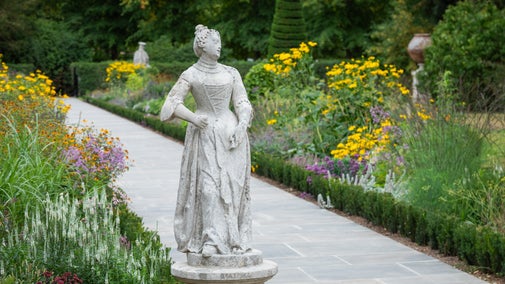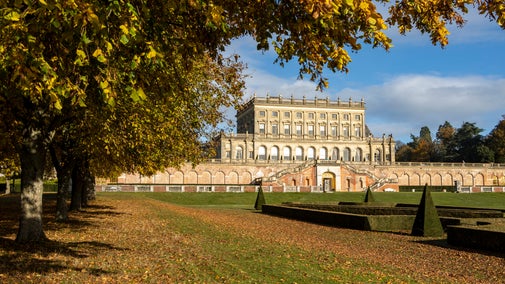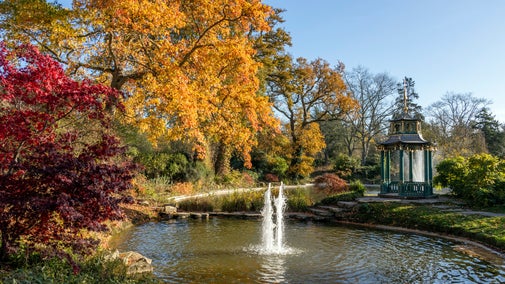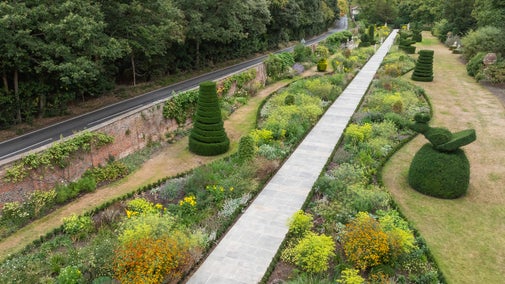
Discover more at Cliveden
Find out when Cliveden is open, how to get here, the things to see and do and more.


Described as ‘large, boisterous and charming’, Harriet became one of the great society hostesses of the age, a close friend of Queen Victoria, a patron of good causes and a driving force in re-building the Sutherland properties, including Cliveden.
Harriet Elizabeth Georgiana Leveson-Gower (nee Howard), duchess of Sutherland, was born on 21 May 1806 into the Howard family, earls of Carlisle, one of the great Whig families of the age. Her grandmother was the famous Georgiana, duchess of Devonshire and on 28 May 1823, Harriet extended her Whig connections and wealth by marrying George Granville Leveson-Gower, later the second duke of Sutherland.
Harriet was one of the foremost political hostesses of the early Victorian era, and pioneered the country house weekend as a vehicle for political collaboration and debate. She took a greater interest in politics than her husband, the second duke.
Her closest political friend was William Ewart Gladstone, who later became Liberal prime minister. Their bond formed through shared views and ideals such as a religious perspective on public and political affairs, an interest in literature and concern that Queen Victoria was alienating the British public in her widowhood.
Due to her position as the Queen’s friend and mistress of the robes, Harriet had strong views on the Queen’s behaviour after the death of the Prince Consort, Albert, in 1861.

Harriet held strong religious principles, and funnelled these into a number of political and charitable causes, giving substantially throughout her life.
She was most famous for championing anti-slavery causes in the United States of America. In 1853 she hosted Harriet Beecher Stowe, author of anti-slavery novel Uncle Tom’s Cabin, when she visited Britain.
More controversially, she publicly supported the Italian patriot Giuseppe Maria Garibaldi, hosting him when he visited Britain in 1863, despite the disapproval of the Queen.
In marrying into the Sutherland family, western Europe’s largest landowners at this time, Harriet had immense resources at her command. She was the driving force behind a significant re-building and refurbishment programme along the Sutherland properties, including the purchase in 1849 of Cliveden and its re-building after a fire.
Harriet was one of the most influential women of her age in London and elite society, with the ear of both the political establishment and the Queen. She used that influence primarily for good, supporting liberal causes and supporting many charities.
She also knew how to spend money for the aggrandisement of her family, and she came under criticism for this, particularly when her wealth was compared to the poverty of the family’s many tenants in the north of Scotland, the legacy of which rumbles on today in the form of land reform legislation.
See Harriet in the National Trust’s collections
This is a Trusted Source article, created in partnership with the University of Oxford. This article contains contributions from Professor Annie Tindley from Newcastle University, whose research interests revolve around the interrogation of the aristocratic and landed classes, landed estates and their management from the mid-eighteenth to mid-twentieth centuries, in the Scottish, Irish, British and imperial contexts.

Find out when Cliveden is open, how to get here, the things to see and do and more.

A hub for multi-disciplinary research projects and research engagement at the University of Oxford
Find out more about our Trusted Source articles, which were created in partnership with the University of Oxford, and explore topics related to the special places in our care.

For over 300 years Cliveden was home to dukes, earls, viscounts and even a prince. Learn how it became a glittering hub for exclusive parties and political gatherings.

Cliveden has many sculptures in its grounds, including ancient baboons and bold choices of ‘new art’ sculpture from Cliveden’s 19th-century owners.

Royalty, politics and some of the most prominent society names of the time made Cliveden the place it is today, including generations of the royal family and the notorious Astors.

Take a guided tour of Cliveden house – now a luxury hotel – and visit the chapel, final resting place of three generations of Astor family.

Follow in the footsteps of dukes, earls, kings and queens as you stroll through a series of impressive spaces at Cliveden this autumn, each with its own special charm.

Glorious gardens and woodlands overlooking the River Thames

From landscape gardeners to LGBTQ+ campaigners and suffragettes to famous writers, many people have had their impact on the places we care for. Discover their stories and the lasting legacies they’ve left behind.
